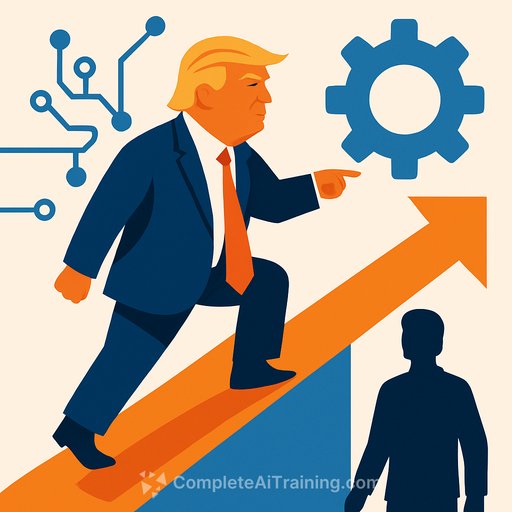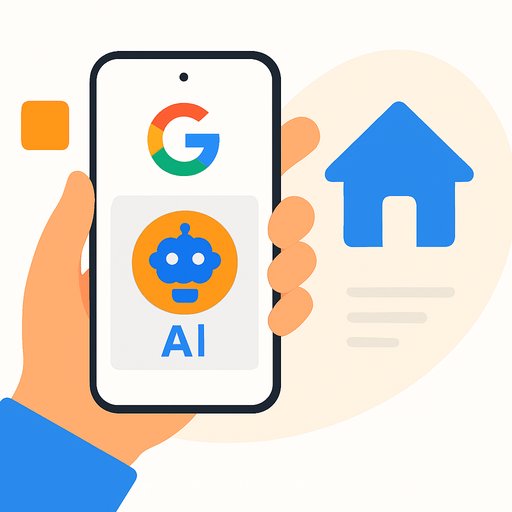Trump's Gen AI Deregulation: Will Your Product Sink or Soar?
The administration has signaled a broad push to ease rules on generative AI. David Sacks has been tapped as AI and cryptocurrency czar, signaling an agenda built around speed and commercial deployment.
For product teams, this is a clear message: AI velocity will increase. Those who build with it win market share. Those who wait fund their competitors' learning curve.
What Deregulation Means for Product Development
Fewer approvals and reduced compliance overhead will shorten cycles from concept to ship. Expect faster experimentation, more AI in customer-facing flows, and higher executive urgency for AI-backed roadmaps.
The market will reward teams that move first on AI-native experiences, not just AI add-ons. Think core product features, not side projects.
- Personalized content at scale for lifecycle marketing and in-product guidance
- AI copilots in onboarding, support, and success workflows
- Design and prototyping acceleration with generative variants and on-demand testing
- Fraud and risk scoring that adapts in near real time
- Data-driven product discovery using conversational research syntheses
The Cost of Waiting
Teams that delay will face higher unit costs, slower iteration, and rising user expectations set by AI-first competitors. The gap compounds: speed creates data, data improves models, improved models create better user outcomes.
We've seen this movie before. Past deregulation in other sectors spurred investment and learning cycles. Expect a steeper adoption curve and fewer excuses for slow AI delivery.
Proof Points You Can't Ignore
Research indicates meaningful efficiency gains. McKinsey reports sizable productivity improvements in customer service with generative AI, with gains reported up to 45% in some tasks source.
In practice, financial institutions are using generative systems to flag fraud patterns and reduce losses while improving customer trust. A regional insurance company revamped its L&D programs using AI assistants and hands-on workshops; employee engagement rose, cycle times dropped, and teams began proposing AI features for claims and support on their own.
Strategic Roadmap for Product Teams
- Run a 30-day audit. Map workflows with high volume, long cycle time, or high error rates. Prioritize 2-3 AI use cases with clear revenue or cost outcomes.
- Define guardrails early. Set privacy baselines, PII handling, red-teaming, and model evaluation criteria before you ship the first beta.
- Choose the right pattern. Start with retrieval-augmented generation (RAG), structured prompts, and small decision models where accuracy can be measured. Add fine-tuning only after you have data.
- Ship in stages. Week 2: prototype. Week 4: internal pilot with human-in-the-loop. Week 8: limited external beta. Week 12: scale with SLAs and clear rollback plans.
- Instrument everything. Track latency, cost per request, containment/deflection rates, accuracy, hallucination rate, CSAT, and revenue lift.
- Control costs. Use caching, function calling, tool-use limits, and prompt compression. Benchmark model families against quality and token cost before committing.
- Own your data. Create clean datasets, consent pathways, and retention policies. Isolate training vs. inference data. Document data lineage.
- Model evaluation and QA. Build golden datasets, reference answers, and auto-evals. Add adversarial tests for bias, safety, and PII leakage.
- Human-in-the-loop by design. Route edge cases to experts, collect feedback, and feed it back into prompts and datasets.
- Vendor strategy. Maintain a primary and a backup model provider. Avoid lock-in with abstraction layers and bring-your-own-key setups.
- Compliance light, trust heavy. Even with fewer rules, publish model cards, user disclosures, and incident response plans. Trust compounds faster than features.
- Org readiness. Upskill PMs, designers, and engineers on prompting, evaluation, and AI UX patterns. Close the skills gap that many reports cite as a top blocker source.
KPIs That Matter
- Time from PRD to live experiment
- AI feature adoption and weekly active usage
- Support containment rate and resolution time
- Model quality: accuracy, refusal rate on unsafe prompts, hallucination rate
- Unit economics: cost per generated action, gross margin impact
- Customer outcomes: NPS, retention, expansion
Ethics and Risk: Move Fast, Don't Break Trust
Deregulation may reduce paperwork, but public expectations are high. Bias incidents, privacy leaks, or misleading outputs will erase gains.
- Use role-based access and data minimization for prompts and logs
- Provide user-level transparency and easy opt-outs for AI features
- Run periodic bias and safety audits; publish summaries that customers can understand
- Establish a clear incident process with SLAs and accountability
Build Skills Without Slowing Down
Pair internal enablement with hands-on courses and sprints. Create a shared prompt library, evaluation playbooks, and AI UX patterns across teams.
If you need structured upskilling by role, see Courses by Job or browse Latest AI Courses.
Move Now
This policy shift is an execution test. Pick two high-impact use cases, set measurable outcomes, and ship a pilot in 30 days. Treat AI as a core capability, not a bolt-on.
Speed creates learning. Learning creates better products. The teams who act now will set the standard everyone else has to meet.
Your membership also unlocks:






